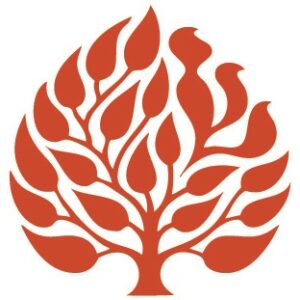
An Oasis of Freedom and Justice
Jul 28, 2017 By Daniel Nevins | Commentary | Tishah Be'av
“I have a dream that one day even the state of Mississippi, a state sweltering with the heat of injustice, sweltering with the heat of oppression, will be transformed into an oasis of freedom and justice.”
Read More
Discovering Love at Dawn
Jan 15, 2016 By Benjamin Resnick | Commentary | Bo
The photograph above—my last before becoming a parent—was taken early in the morning on January 7, 2015, the coldest day of a very young year. In my imagination, Jonah was born just after, as the sun was rising over the city. In reality, he was not. He was born at 11:11a.m., when the sun was already high in the sky. But, like the Doe of the Morning, I remember him coming at dawn.
Read More
Cities of Refuge
Jul 17, 2015 By Tim Daniel Bernard | Commentary | Masei | Mattot
Pu`uhonua O Hōnaunau, the City of Refuge, on Hawaii’s Big Island was functional into the early 19th century, when kapu, Hawaii’s system of ritual taboos, was overturned by King Kamehameha II. Until that time, many breaches of the kapu could result in death, including for an offence as ephemeral as allowing your shadow to fall over a chief’s house. However, by entering a pu`uhonua (a place of refuge), often by swimming across a bay, and performing a ritual facilitated by the priest there, the punishment could be annulled.
Read More
The Seasons of God
Jul 10, 2015 By Nancy Abramson | Commentary | Pinehas
Parashat Pinehas is one of several instances in the Torah in which the holidays and their sacrifices are described. In Leviticus, we read the verse, “These are the fixed seasons of God, which you shall proclaim as sacred occasions;” (23:4) a prelude to the descriptions of festival practices with particular emphasis on the offerings made by the kohanim (priests). Here in Pinehas, the Torah lays out the religious calendar as a catalogue of these public sacrifices (Num. 28:1–29:39), which forms the maftir Torah reading for each festival.
Read More
Character vs. Reputation and the Social Construction of Reality
Jul 3, 2015 By Malka Strasberg Edinger | Commentary | Balak
It is easy to pigeonhole people and to dichotomize the categories into which we place people, such as good vs. evil. Myths and legends tend to portray characters in this one-dimensional manner, and it is considered remarkable when a character is portrayed as complex. But all humans are complex. The human condition is a multivalent one, and people are almost never so easily categorized. Everyone’s character has the capacity for both good and bad, and in fact, everyone realizes elements of both within themselves.
Read More
The Butchers
Jun 26, 2015 By Alan Mintz (<em>z”l</em>) | Commentary | Hukkat
The ritual of the red heifer (Num. 19) has always fascinated readers. Not only is it elaborate and mysterious, it is also based on a rarity: a red cow. The paradoxes and power of this passage attracted the attention of modern Hebrew writers. Set in Eastern Europe, “The Red Heifer” tells the story of butchers who steal a beautiful and vigorous cow, butcher it without a shoḥet (a ritual slaughterer), and sell the meat as kosher. The centerpiece of the story is a gruesome, blow-by-blow description of the slaughter, the great animal quivering and gushing blood.
Read More
If What Wasn’t Is; Those Who Were Are Not
Jun 19, 2015 By Joel Alter | Commentary | Korah
A Distillation of Numbers 16:28-34
By this you will know
that all I have done
I have not done
of my own devising
but at God’s bidding:

Grapes of Zion
Jun 12, 2015 By Library of the Jewish Theological Seminary | Commentary | Shelah Lekha
It might be surprising, given its association with the people’s sin of being dissuaded from entering the Land, that the motif of the two spies carrying an enormous bunch of grapes (Num. 13:23) became a popular Zionist symbol and eventually even the logo of the Israeli Ministry of Tourism. Indeed, it has been suggested by arts writer Menachem Wecker that several of the older Christian representations of this image deliberately portray the two grape-bearers in a negative light.
Read More


